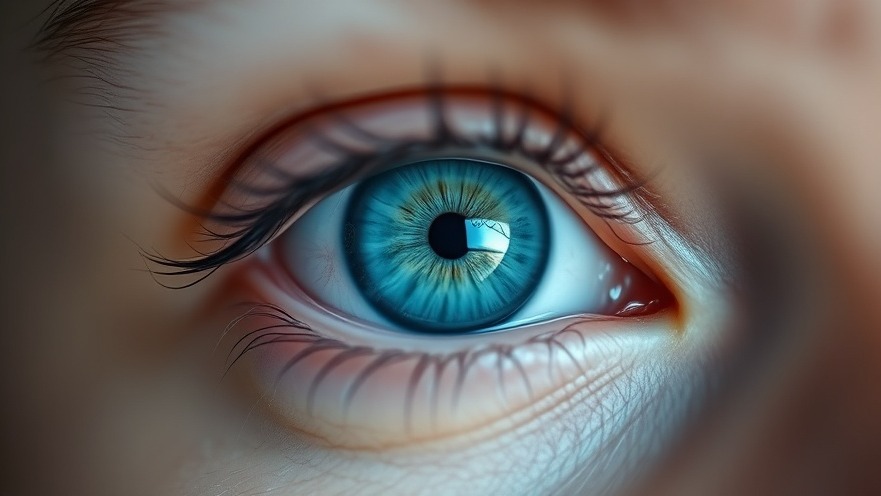
Understanding EMDR: A Promising Pathway to Healing Trauma
For many individuals grappling with the haunting effects of trauma, Eye Movement Desensitization and Reprocessing (EMDR) has emerged as a beacon of hope. This therapeutic approach offers not only effective treatment but also a promise of rehabilitation that resonates deeply with both patients and healthcare providers. As a licensed clinical psychologist specializing in patient relationships and mental wellness, I believe it’s crucial for us in the medical community, particularly within concierge practices, to understand why EMDR is gaining traction among trauma therapies.
Harnessing Structure for Enhanced Outcomes
One of the standout features of EMDR is its structured approach, which is highly appealing to both therapists and patients. This structured methodology allows therapists to track patient progress accurately and enables patients to feel secure in their therapy journey. Ultimately, by using well-defined phases, patients can understand what to anticipate and engage meaningfully in their recovery.
The predictability of the structured approach offers a safe space for individuals to confront their traumatic experiences and negative beliefs. This clarity can enhance a patient's commitment to therapy and serve as a significant motivational lift in their healing process.
Faster Results: An Attractive Factor for Patients
Traditional therapeutic methods can languish over months or even years before presenting noticeable results. In stark contrast, EMDR can generate substantial improvements in just a matter of sessions. Research indicates that numerous patients report significant reductions in trauma-related symptoms after as few as three sessions, propelling EMDR into favor as not just a valuable but a timely treatment option.
The speed at which EMDR can facilitate healing from emotional wounds effectively translates into faster recovery in daily life experiences, thereby allowing individuals to shed the burdens of their traumatic histories more swiftly. Observing this instant progress can reinvigorate a patient's faith in the therapeutic process, perpetuating their engagement and commitment.
Supported by Science: A Proven Therapeutic Approach
EMDR's effectiveness is backed by a growing body of scientific evidence. Studies reveal positive outcomes for PTSD and other trauma-related disorders, demonstrating potential symptom reductions by up to 84%. The substantial success rates presented in clinical trials add credibility and legitimacy to EMDR as a preferred therapy for trauma recovery. This recognition encourages more practitioners to recommend EMDR, fostering a wider acceptance and increasing its popularity among both patients and healthcare providers.
Minimal Side Effects: A Safer Alternative
One of the most significant advantages of EMDR compared to traditional pharmacological treatments is the minimal side effects experienced by patients. Many individuals with trauma histories harbor apprehensions about side effects from medications; EMDR offers a welcome solution. This therapy relies on the patient’s natural ability to process trauma rather than introducing potential adverse physical side effects associated with drugs, making EMDR a preferred choice for clients seeking a holistic approach to trauma recovery.
As we strive toward a more empathetic and effective model of care, healthcare providers within concierge practices should consider not only the clinical efficacy of EMDR but also how it aligns with broader wellness strategies for patients.
Future Directions: The Evolving Landscape of EMDR
Despite its proven effectiveness, EMDR continues to evolve, with research exploring its application in diverse contexts beyond PTSD into areas such as anxiety disorders, depression, and more. The broader acceptance of this methodology reflects the ever-expanding understanding of trauma and its multifaceted implications on overall health.
For concierge medical practice owners, integrating EMDR into mental health offerings could elevate your practice’s service portfolio, ultimately positioning you as a leading provider of comprehensive patient care. By embracing new therapies like EMDR, you showcase a commitment to innovative treatment methodologies that prioritize patient wellness.
Take Action: Integrate EMDR into Your Practice
If you’re looking to elevate your practice and meet the mental wellness needs of your patients, consider including EMDR therapy in your treatment repertoire. This evidence-based approach offers significant benefits, enhancing your patient care model and solidifying your standing as a top medical concierge practice. Patients deserve cutting-edge treatment options; EMDR is a valuable addition to ensure you’re providing the best possible care.
 Add Row
Add Row  Add
Add 




Write A Comment